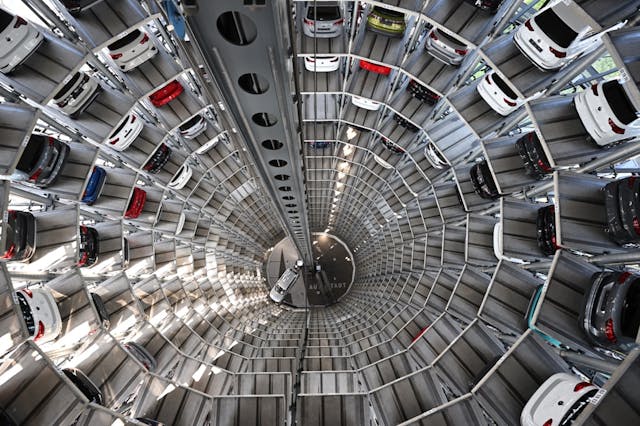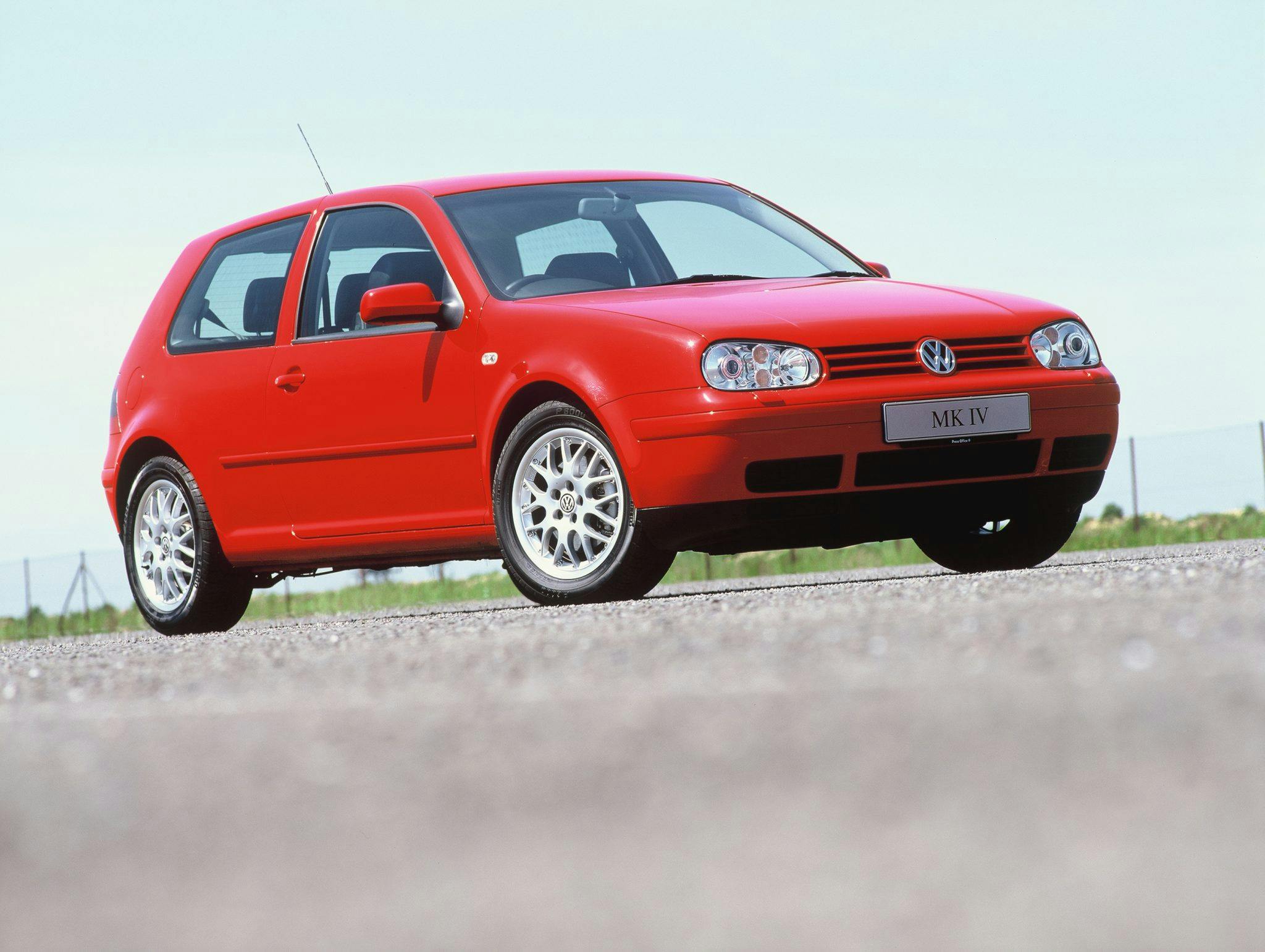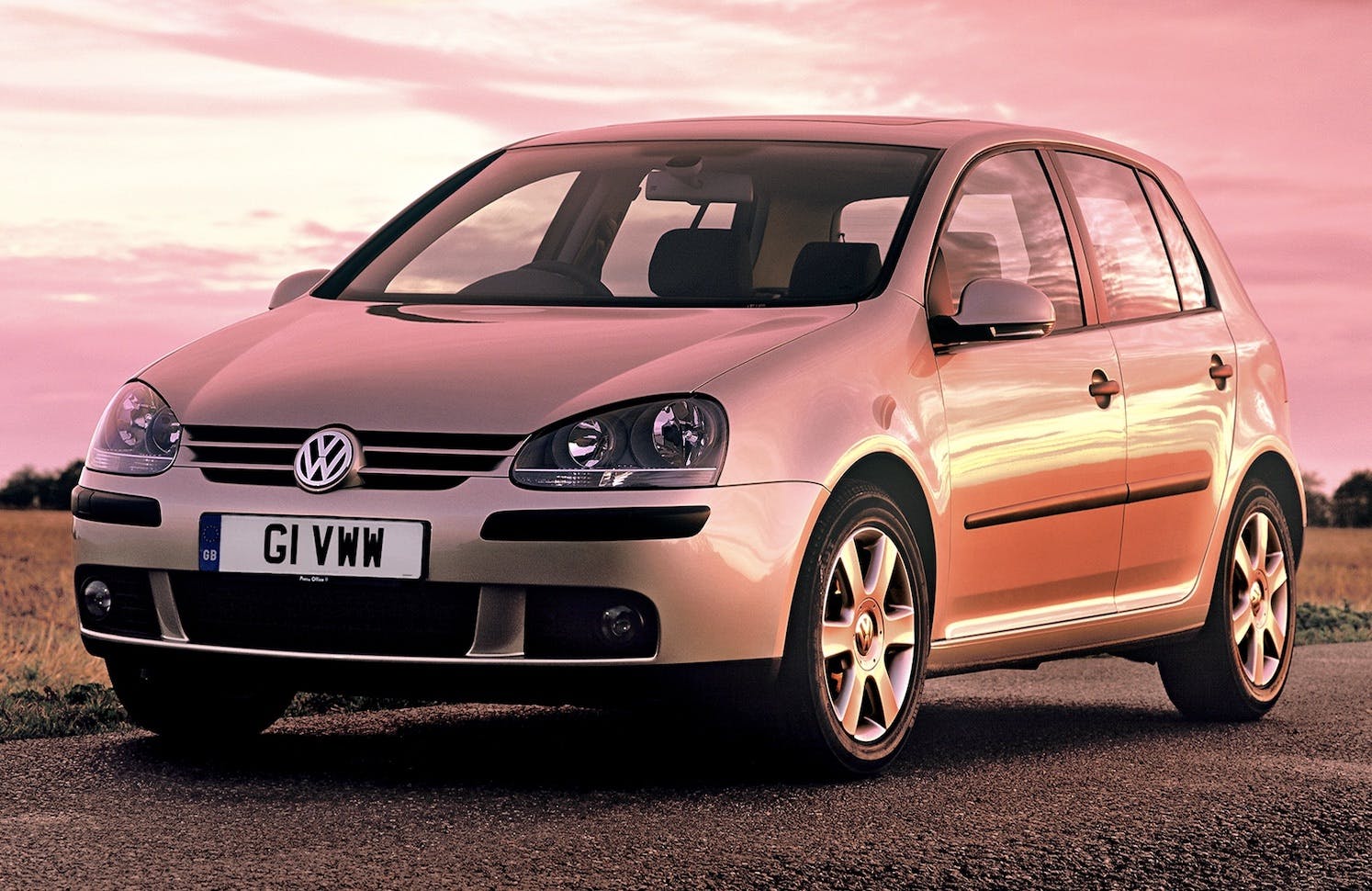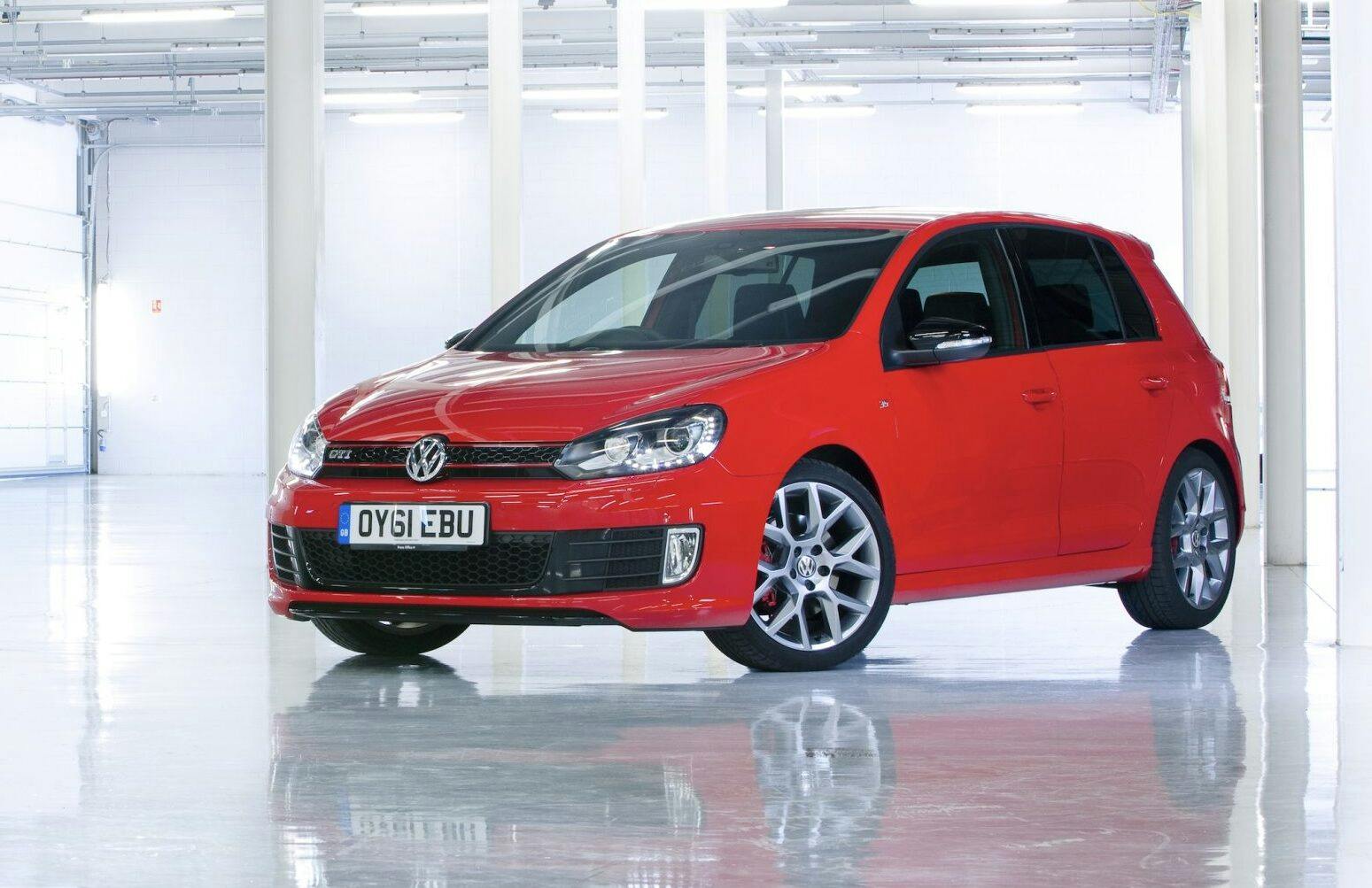Media | Articles
Golf at 50: How VW Built One of the World’s Most Significant Cars
Given the global impact of the Volkswagen Golf, which turns 50 this year, it was only appropriate that we solicit the perspective of one of our veteran colleagues across the pond. We’ve adjusted the lexicon to suit American readers, though a few UK-specific references remain for the sake of authenticity. —Ed.
Bernd Pischetsrieder, a former Volkswagen boss, once volunteered in a round-table interview that he had just driven the latest Golf model due for launch in a few months.
“What’s it like?” asked one journalist. Pischetsrieder looked nonplussed.
“It’s like a Golf,” he replied, staggered that anyone could be quite so ignorant.
He had a point. Over 50 years and a total 37 million sales across the world, VW’s Golf has often been the answer to pretty much any and every motoring question. Now in its eighth generation, for the last half-century, Golf has been the quintessential family-sized hatchback: spacious, economical to run, reliable, stylish, and, like the original Mini, brilliantly classless.
Marketplace
Buy and sell classics with confidence
It’s been beloved by generations of European families, including our own Royal family, and by quite a few Americans, where it was originally badged as the Rabbit. And in that super-sized land, our medium-sized Golf is seen as a compact car.

Nevertheless, as a Beetle replacement, the Golf was a long time in gestation. From as far back as 1952, under VW’s first managing director, Heinrich Nordhoff, the company had been developing a series of rear-engine Beetle replacements—over 70 of them, many of which were painstakingly developed and then rejected. By 1967, and after a prolonged German sales slump, VW was getting desperate about a replacement for the charismatic but aging car, which had been designed by Ferdinand Porsche under instructions from Adolf Hitler. The company’s finances were in dire straits, sales were tumbling, and all the management had come up with was the weird Type 3 Variant, the anodyne K70, and endless clunky Beetle-replacement prototypes going back to the 1950s.
In the end it took a visit to the Turin motor show by director general Kurt Lotz and Italian importer Gerhard Gumpert. There they each wrote down their favorite models, only to discover that most of them were designed by Giorgetto Giugiaro, and a light appeared at the end of the tunnel. VW project EA337 became the first Golf.
While “Blizzard” and “Caribe” were considered as names for the new hatchback, the Golf name won out. It was previously thought to have two possible derivatives: first, that it followed a VW pattern of calling cars after winds (Passat, a German name for a trade wind; Scirocco, a warm Mediterranean wind from the Sahara), and Golf is close to Gulf Stream (Golfstrom in German); or second, that it was named after a sport, as were cars like the Polo and the Derby.

It turned out, though, to be named after a horse, a Hannover gelding owned by Hans-Joachim Zimmermann, then VW’s head of purchasing. In 1973, VW chairman Horst Münzner came over one weekend and rode Zimmermann’s horse, and both men thought the Golf name was a good one for the new hatchback. Zimmermann revealed all when he donated a picture of Golf the horse to the Stiftung Automuseum Volkswagen: “My horse was the inspiration for the Golf’s name, it stands for top-class, elegance and reliability. May the Golf have a long history of success. My horse got to be 27 years old, and in human terms, that meant it reached the ripe old age of 95. That is a pretty good omen.”
Perhaps equally portentous was the fact that Giugiaro considered his folded-paper Golf design to be the most important car of his distinguished career, and it stands close scrutiny even today.
Not only did Golf become a best seller, accounting for more than 50 percent of VW sales by the end of the 1970s, it gradually morphed into a linchpin of the entire VW Group operation, with all other models spun off the basic kit of parts that underpinned Golf. So, think of Polo as the small Golf, Passat as the big Golf, and so it went on, to include Audis (posh Golfs), Seats (sporty Spanish Golfs), and Škodas (Czech Golfs). And if the GTI was a fast Golf, the Touran was a van Golf, and the Tiguan an SUV Golf.

Last month, VW presented its latest Golf—the last to be powered by combustion—to the world. It’s far from all new and can trace its underpinnings to the 2012 Mk7 model, which is one of the finest mass-production cars ever built.
Trouble is, the Mk7’s replacement, the Mk8 of 2020, would have been fine were it not for the dreadful touchscreen system with its confusing CARIAD software and its wrongheaded slider switches for adjusting radio volume and heating, which weren’t even illuminated at night.
So this new Golf is really 8.2, if you like, with some of its software and switchgear improved and upgraded, but sharing its MEB platform structure pretty much unchanged from the Mk7. As a result, it’s probably just as good to drive but with a load more interfering electronic safety systems.
And will there be a Mk9? Probably. After his predecessor denied that there would be a replacement Golf, new VW boss Thomas Schäfer proved to have a better grasp on the public’s love for the familiar and trusted, and he is determined not to throw away the name, which has been a bestseller ’round the world for the last 50 years.
“The Golf has been at the heart of the Volkswagen brand for half a century now,” Schäfer said at the new car’s launch, “offering affordable mobility for all at the highest technical level. It has constantly adapted itself to customer needs and has thus become a global bestseller… The Golf does not get any better than this.”
As Alan Price sang in the famous 1987 TV commercial for the Mk2 Golf, which starred model Paula Hamilton: “Everyone is going through changes. No one knows what’s going on … ”
Well, we do—a bit. Schäfer’s all-new Golf won’t arrive until 2028, at which point it’ll be a battery-electric vehicle, and given the way VW has twisted and turned on the hook of good intentions for the last decade, that leaves lots of room for maneuvering, especially as the EU won’t actually ban combustion-engined cars until 2035. In other words, watch this space …

But let’s go back to the Golf’s heyday, starting with where it’s built. Though it has been produced around the world, the Golf is most associated with the 70 million square foot plant at Wolfsburg in Germany. Built in 1938, the factory was established on a greenfield site near the village of Fallersleben. At its inauguration it was named KdF-Stadt – Hitler’s original name for the Volkswagen Beetle was KdF-Wagen, for “kraft durch freude,” meaning strength through joy. The site was later named Stadt des Kdf-Wagens bei Fallersleben—City of the Strength Through Joy Car at Fallersleben—and was expanded into a larger city with blocks of flats for workers and a power station that provided electricity and heat to those workers’ homes.
After World War II and the reinstatement of production of the Beetle, it was renamed Wolfsburg, after the nearby Wolfsburg Castle. In 2003, for the launch of the fifth-generation Golf, Volkswagen temporarily renamed the city ‘Golfsburg’ as a fairly rubbish publicity stunt.

So here we are in 1974, and the launch of the first-ever Golf. “Great power, great performance and great fun,” ran the copy lines for the razor-edged little car. It arrived in the UK in October 1974, but the road testers didn’t get their hands on it until the following year.
Motor magazine’s car breakers tested the 1100L model in early 1975, and their judgment was nuanced. They liked the smooth and tractable engine, excellent gearchange, responsive steering, and safe handling, though the photographs seemed to show them hurling the little car through every available corner. What they didn’t like so much was the £1517 price (£11,215 today, or roughly $14K), which made it quite pricey against the Austin Allegro, Alfasud, and Ford Escort. And the performance data was rather underwhelming: an 87.4-mph top speed, 0-to-60 mph in 17.8 seconds, and an average of 28.4 mpg.

It was four months until they got their hands on the more luxurious and powerful 1500LS, which cost £1798 (£13,292, or roughly $16,750). Motor’s verdict was that the seating was too hard, ventilation was poor, and the gearchange felt imprecise, but they still liked it and it performed a lot better, with a 97.8-mph top speed, 0-to-60 mph in 12.6 seconds, and average fuel economy of 27.8 mpg.
The Golf was runner-up to Citroën’s CX in the 1975 Car of the Year award, but the public knew what they wanted, and in its first year of sales the VW was the UK’s 14th best-selling car, with almost 20,000 sales.
I owned an early ’80s Mk I with a 74 hp (75 bhp), 1.6-liter engine and five-speed gearbox. Bought secondhand, it was a lovely little car: nippy, economical, and very cool compared with the competition at the time. I was far from alone; there are pictures of a certain Diana Spencer standing beside a light blue Mk1. Amazingly, the Mk1 model continued to be produced in South Africa until 2009.

In 1976 came the GTI, which is considered to be one of the first-ever hot hatches. The UK didn’t get it until 1977, and only as a special-order, left-hand-drive model. Back to our fast and furious Motor testers, who concluded: “If Volkswagen are as successful in competition as they have been in developing this car, they will prove formidable opponents.”
UK buyers would have to wait until 1979, however, for a full factory right-hand-drive GTI, which basically was the start of the British public’s love affair with fast family hatches; there have been times when GTI models have accounted for more than 10 percent of all UK Golf orders.
The second-generation Golf was introduced in 1983 (1984 in the UK). By this time the GTI version was sporting a 1.8-liter engine, and with the larger body and more practicality, many consider the Mk2 of whatever stripe to be one of the finest Golf models produced.
A complete restyle arrived with the Mk III, which helped it finally garner the European Car of the Year award, in 1992. The 1998 Mk4 marked an attempt to take the car upmarket with a lovely attention to detail in the cabin, but also a big weight increase, lackluster handling, and an eight-valve GTI model that was scarcely worthy of the badge. Largely unloved except by VW executives, the Mk4 was compared unkindly to the sharp handling and looks of the 1998 Ford Focus.
The fifth and sixth generations (2003 and 2008, respectively) moved the game on with independent rear suspension, but again with a weight increase. It was the Mk7 that incorporated VW’s new MQB platform, which pushed the Golf back to the forefront, with more space, a bigger boot, and more rear leg room than before.
And in 50 years, boy, did the Golf grow. The new Golf Mk8 measures 168.7 inches in length, with a curb weight that starts at 2767 pounds. Contrast that with the tiny Mk I, at just 146 inches long and weighing 1764 pounds, but the latest model is also safer, quieter, more comfortable, faster, and more economical, so progress hasn’t all been backward.
Now it’s the beginning of the end for a car that many learned to drive in and which in the last half-century has sold on average 2000 units a day. While the Golf continued to top the sales charts as the world went into Covid lockdown, its fall started in 2022, a troubled year in general for the motor industry. At that point, the Golf’s 15-year run at the top of the European sales charts ended, with VW’s manufacturing and supply issues causing the car to fall to fifth place, with Peugeot’s 208 assuming the top spot.
Not that the Golf will disappear from our roads overnight. With total sales of over 2.3 million in the UK, there have been at least 442 different Golf models over the years, which makes it very difficult to work out exactly how many are still on the road, although one estimate has it at just over a million.
As they said in the first GTI ads, “Everyone must have something in life he can rely on.”
If you are someone who still has a Golf parked outside, you’re part of a once-important but now slowly diminishing herd. But don’t despair, your daily driver has been one of the most influential and significant cars ever built, and if you look after it, it most surely will look after you.
***
Check out the Hagerty Media homepage so you don’t miss a single story, or better yet, bookmark it. To get our best stories delivered right to your inbox, subscribe to our newsletters.

























Great article …. well done, sir!
Would love to see a follow on article or two specifically delving into the Convertible & GTI models.
My lovely 1982 Rabbit Convertible was built in Germany at a time the horrible Rabbit sedans were being built in Pennsylvania. It is, as they say, a completely different animal.
I too, own a German-built Rabbit convertible I picked up just before Covid hit. I’ve never ridden in an American Rabbit of that same vintage, but I can say that it is a solid little car. I just wish it was a GLI.
A tangent to this article, but my wife and I purchased an ‘87 Jetta GLI, at the time basically a GTI with a trunk. One of our first trips with it was a cross-country drive moving from San Francisco to New Orleans. Despite a dealer-installed cruise control that worked only to 65mph, the drive was a great intro. I find myself nostalgic for that lightweight, great-handling, great driving little car.
I had a ’76 Dasher (Passat) sedan. Best handling car I’ve ever had – I recall driving west from 128 on the Mass Pike late on the day we had a blizzard in ’87. Cars off the road all over the place as I went flying along the unplowed icy snow, bouncing from rut to rut. You could drive no-hands at 75 and it tracked arrow straight. And you could change the oil wearing a suit without getting dirty… the filter was near the front.
The ’84 Rabbit GTI I still drive was built in Pennsylvania, although the drivetrain was built in Germany. It was totally reliable for its first two decades and is a blast to drive. My daily driver is a Mk 7 Golf GTI (2017) and, although a half-ton heavier than the Rabbit, is just as fun to drive while being quite civilized. Two different flavors of a great car.
Golf’s are fun cars but I cannot stand the interior of the newest car. It’s awful.
I remember two things about the early Rabbits. One was a girl that had one with a 1.7 that always had a vibration that they couldn’t fix, and the other was watching one in a “track” event in a parking lot. Back in the 70’s malls and large stores had big parking lots that were empty on Sundays (they were all closed back then), and they would set up cones and have cars run timed laps. The rabbits would corner hard and the rear tire would lift off of the ground (and not spin). That was so foreign to me (literally). I also remember a primer gray corvette (maybe early sixties) that accelerated too hard and spun off the “track”. I’d never seen a car with enough power to break the tires loose while driving straight before then. I can’t remember what I had for breakfast, but I remember that perfectly.